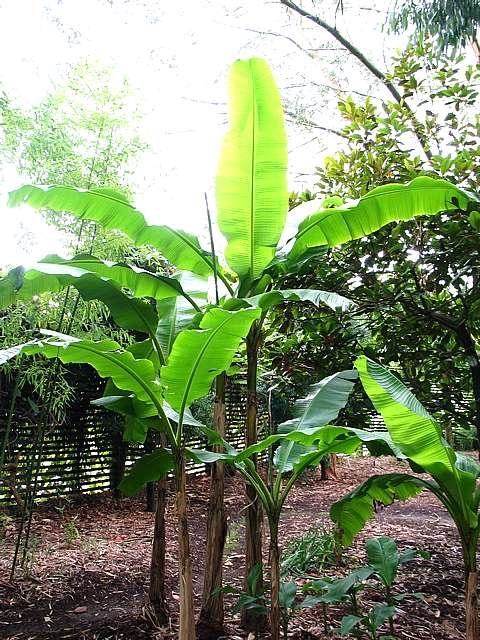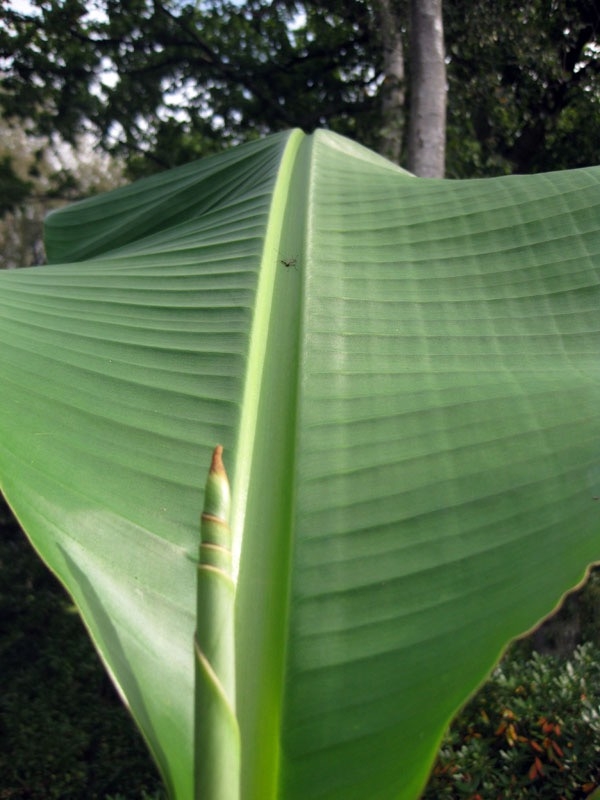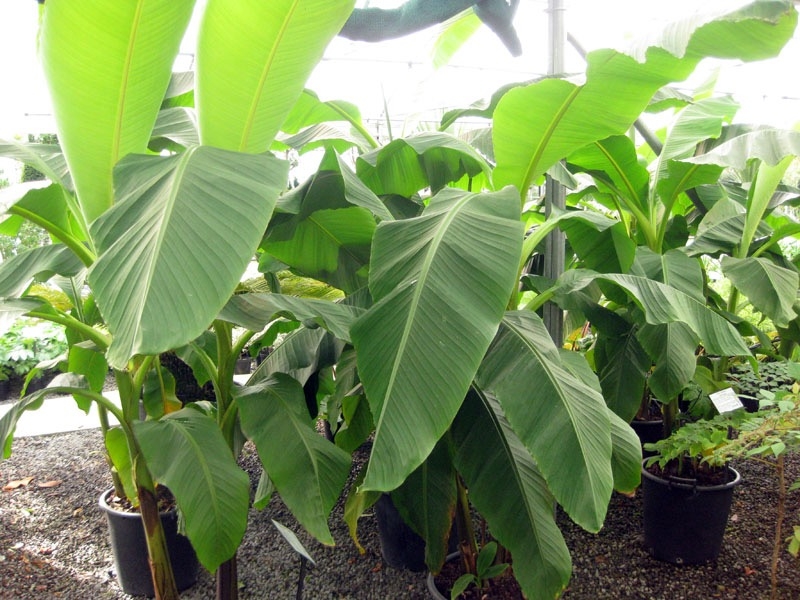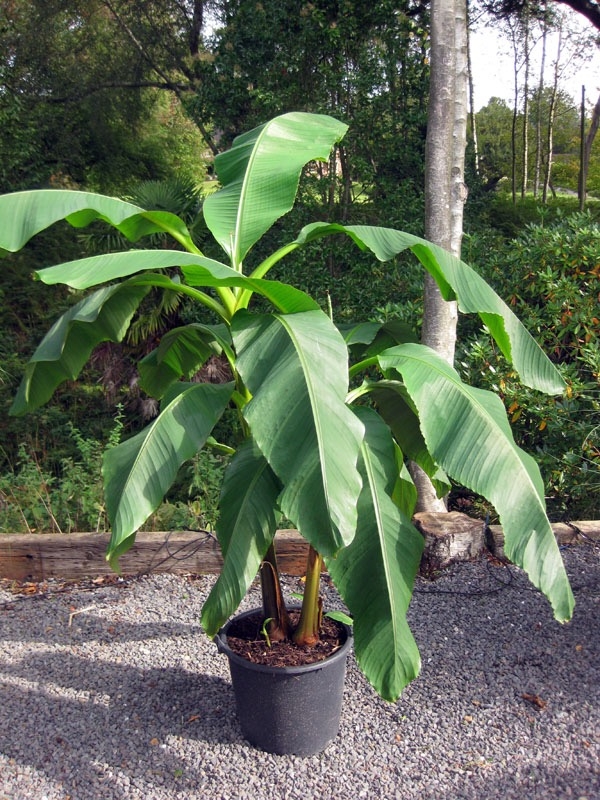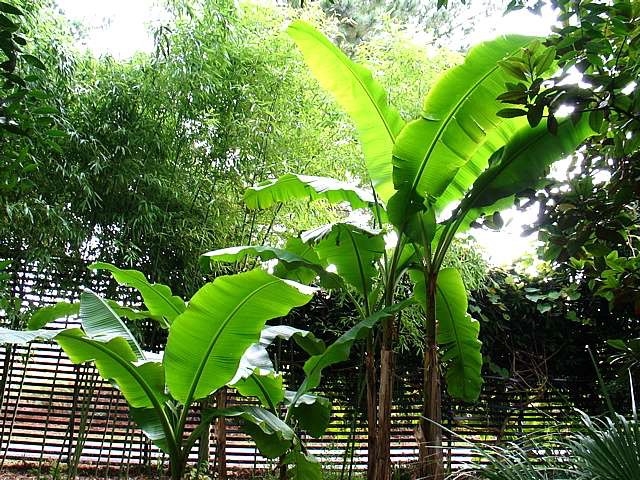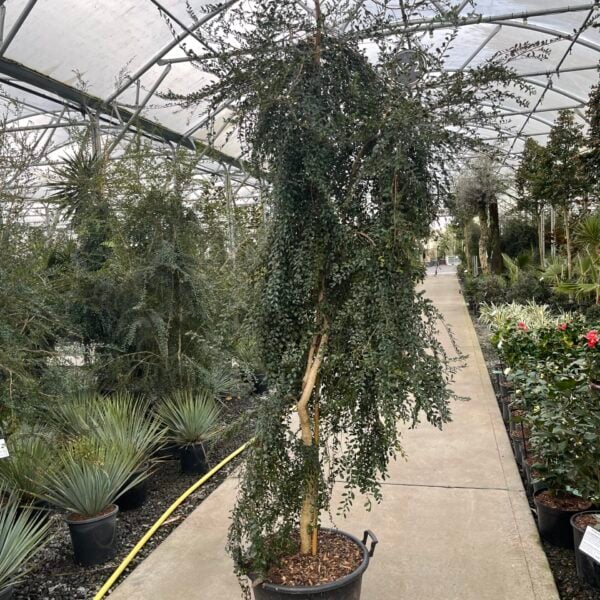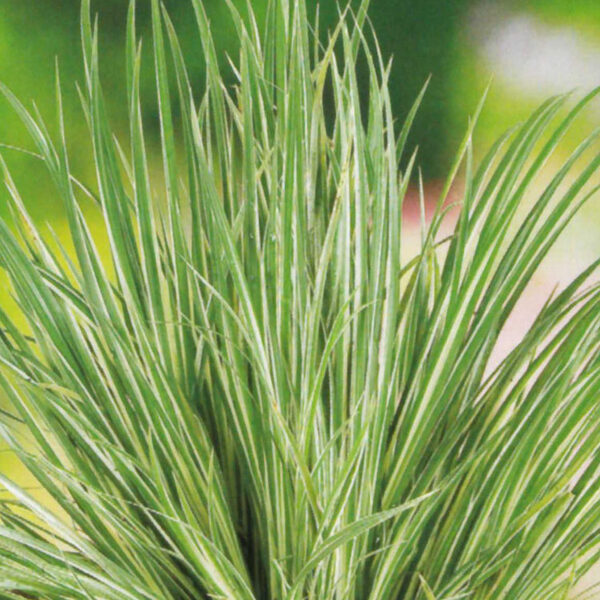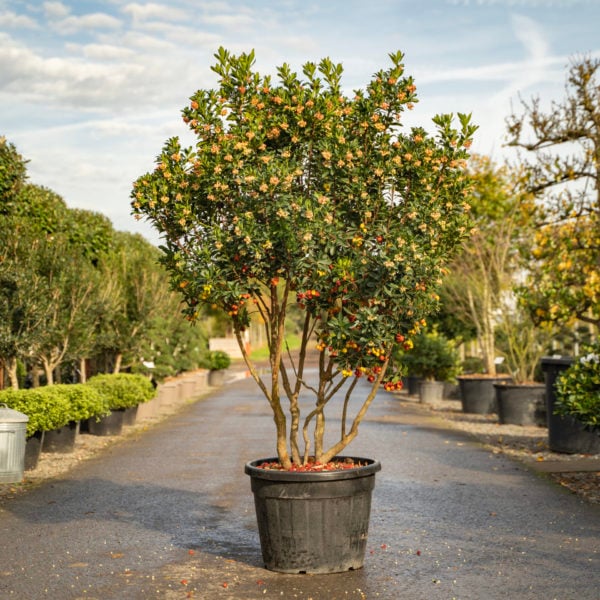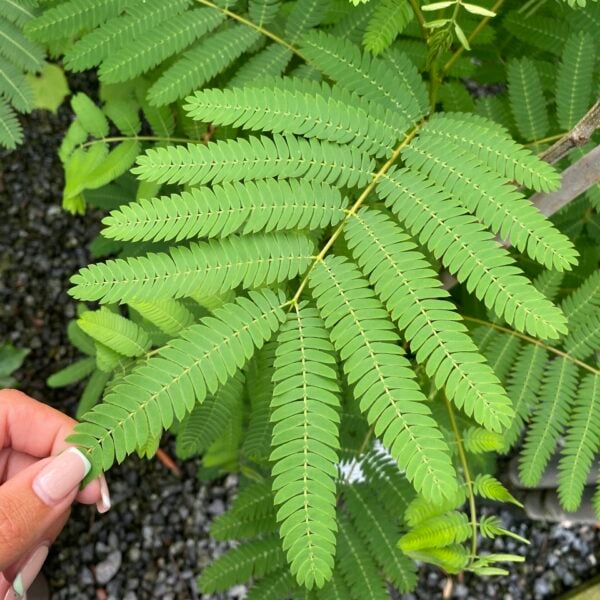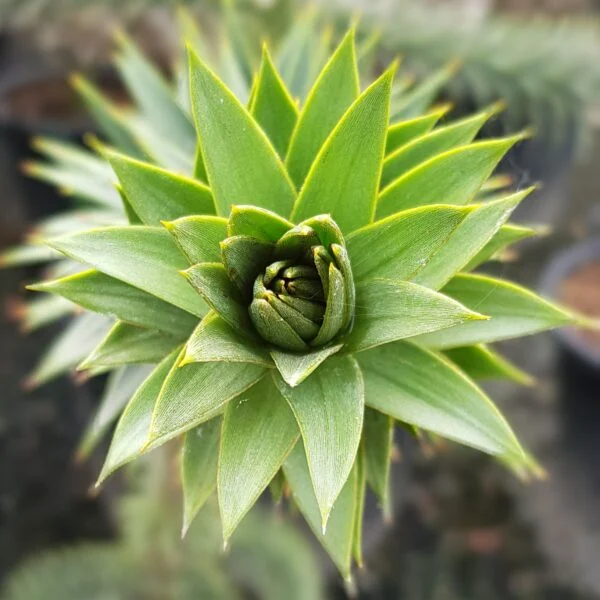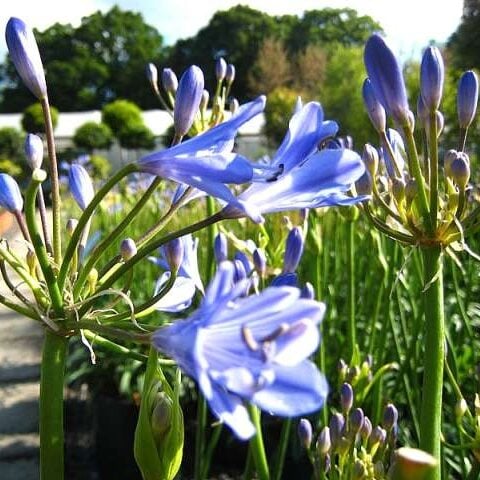Musa basjoo (Hardy Banana)
Implausible though it sounds – a hardy Banana from Japan. Best in shade and sheltered from wind. Leaves get frosted but always come back in the spring. To 15ft in 3 years. Please contact us for stock availability and sizes.

Hardiness level Amber
This has to be the most unlikely candidate for an English garden. Think of the tropics and it's palm trees and bananas. These are native to southern Japan (the Ryukyu archipelago) and the leaves are no more frost hardy than the tropical species but this particular one has a curious characteristic; it grows at ridiculously low temperatures. The Cavendish Banana (the most commonly grown fruiting form) will only grow at an ambient minimum of 15 degrees c but this Japanese one grows at an ambient temperature of 6 degrees c. This means that in an average British winter, the Cavendish would be very dead and rotten by Christmas whereas this one just keeps quietly growing away. With a minimum of protection (see below), come the spring and it'll roar back to life again. On a warm day in midsummer, use a felt tip to mark the overlap on an unfurling leaf in the centre. Return ten minutes later and you'll see the shift. You can almost watch these things grow.
Very rich soil, feed generously (e.g. Blood, Fish and Bone) and keep well watered. Plant in the least windiest position possible in order to avoid the leaves being shredded. Shade is better than sun (sun can scorch the leaves, the leaves will be much greener in the shade and sunny places tend to be windy places). No matter how mild or cold the location, these plants are unlikely to look good in the winter. In very mild areas it may only be necessary to cut off the leaves, the stem will remain standing and new leaves will emerge in the spring. In cold areas acquire yourself some nice old terracotta chimney pots and, after the leaves have been frosted, cut the banana down to a few inches lower than the top of the chimney pot, place the pot over the stem, stuff it with straw and devise a top to keep the rain out. Here it will be safe even when Hell freezes over. If you don't have chimney pots you could use terracotta flue liners with ridge tiles that can sit on the top to make a roof.
Aim to use about 4" thickness of straw to insulate the stem. Uncover it as soon as the worst of the frosts are over and don't worry if the new leaves get a little frosted - once the growing season begins, they grow very fast. Give some careful thought to the position of the plant - it's well worth it and remember to cut off the old, unsightly leaves. These bananas only fruit in mild areas where they haven't been cut down. This will usually happen after three or four years.
Although a spectacular flower, the fruits are only about three inches long and totally inedible. Plants often produce several offsets from the base. These will eventually take over from the main plant after it's died following flowering. We're often asked whether it's possible to remove any to produce new plants. The answer is yes. This is best done during the summer. Wait until the sucker is 2-3 foot tall. Where possible, use a spade to cut through the root between parent and offset, but leave the plant in the ground for a further 2-3 weeks to encourage further root growth. Then lift, and pot into a container only just large enough to fit the rootball. If it is not possible to wait, then lift and pot as before, but crop the leaves to reduce water loss while the new roots are getting established in the pot. Keep the new plant in a cool and shady position until growing away well.
For information and ideas on winter protection go Wrapping for Winter in the Glossary of Terms
Propagated by us by micropropagation. We started producing these in the late 1980s and the original plant had survived unprotected the terribly winters of 1985 and 1987 in front of a greenhouse at the RHS Garden at Wisley in Surrey. A good provenance, we thought.
Additional Information |
|
|---|---|
| Soil Type | |
| Light | |
| Plant Type | |
| Continent of Origin | |
| Specialist Plants | |
| Situation | Coastal, Conservatories, Mild City Gardens, Plants for Pots, Sheltered Garden |
| Hardiness | |




